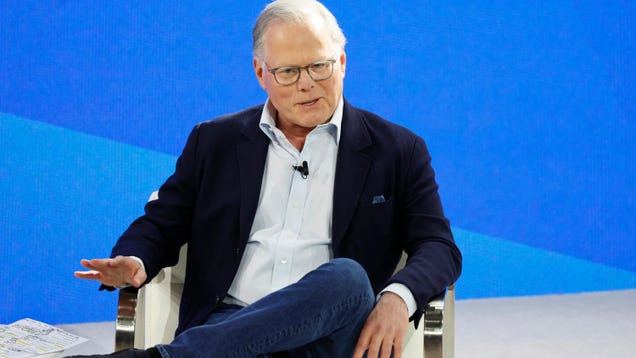
The American Civil Liberties Union (ACLU) has asked a federal court to impanel a jury to determine whether senior members of the Trump administration, including Attorney General Bill Barr, violated the constitutional rights of demonstrators when they used U.S. military soldiers to clear them away from a park near the White House nearly a half-hour before a citywide curfew went into effect.
The case is focused on a June 1 protest in Lafayette Square across from the White House one week after the killing of George Floyd, whose death at the hands of Minneapolis police sparked a nationwide uprising against the racist, disproportionate aggression that police routinely exhibit toward people of color, and Black Americans in particular.
The ACLU has named Trump, Barr, and other senior administration officials—including, but not limited to, Secretary of Defense Mark Esper, Major General William Walke, and Chief of Staff of the U.S. Army Gen. James McConville—as chiefly responsible for the physical and mental injuries suffered by the peaceful demonstrators, whom the ACLU notes were attacked almost at the same time a 20-minute curfew warning was being issued by megaphone.
The violent police responses to otherwise peaceful demonstrations—as opposed to incidents of looting and arson seen in some U.S. cities in the immediate aftermath of Floyd’s death—has effectively served to legitimize the need for systemic and permanent reforms in American policing. Readily accessible evidence of extreme brutality and indiscriminate misuse of so-called “less-lethal” weaponry against protesters has laid bare the innate “us-versus-them” culture of American-style policing, pulverizing decades worth of public relations efforts to cast “law enforcement” officers as protectors and servants of their fellow citizens.
The distinct lack of bureaucratic control over militarized police forces—whose new recruits often receive fewer hours of training than, say, licensed cosmetologists—was on full display during the unprovoked Lafayette raid. Indeed, the actual purpose of the raid, which was conducted by the U.S. military and involved the use of tear gas, pepper spray, rubber bullets and flash bombs (many, if not all, used in ways that disregard manufacturer warnings about potential serious injury or death), was to permit President Trump a photo opportunity at a nearby church following an address in the Rose Garden a short distance away.
The explosions from stun grenades, which cause temporary blindness and hearing loss, erupted in the middle of the park as grey clouds of noxious fumes left the activists clambering for air. The attack came with virtually no warning 20 minutes prior to the city’s 7:00 pm curfew, which D.C. Mayor Muriel Bowser predicted soon after would only serve to undermine police authority.
According to the ACLU, whose clients include members of Black Lives Matter D.C. (BLMDC), the use of excessive force has “frustrated” the ability of law-abiding citizens to exercise their First Amendment right to peacefully assemble. Notably, BLMDC has refrained from participating in “multiple” demonstrations organized by affiliated groups to protect members “feared harm” at the hands of police. Some members have requested time off from organizing work citing psychological trauma. In a complaint before the D.C. District Court for the District of Columbia, the ACLU writes that BLMDC leader April Goggans has noticed a “significant reduction” in people attending protests since the attack. “People who ordinarily attend in-person protests have informed Ms. Goggans that they are afraid to do so because of the violence that occurred at Lafayette Square,” it says.
“What happened to our members Monday evening, here in the nation’s capital, was an affront to all our rights,” Goggans, the case’s lead plaintiff, said in a statement. “The death of George Floyd and Breonna Taylor at the hands of police officers has reignited the rage, pain, and deep sadness our community has suffered for generations. We won’t be silenced by tear gas and rubber bullets. Now is our time to be heard.”
Further, BLMDC has been forced to divert its resources in preparation for police violence, placing added financial strain on the organization. It has had to purchase special equipment, such as goggles, to protect members against chemical irritants, spend more time educating members on the dangers of police violence, and engage its communicators to spread facts about the attacks “to reduce the deterrent effects” of the government’s actions on participating members. What’s more, the group has had to pay for mental health services for at least one member who experienced trauma as a result of the event and arrange transportation for members who may be physically injured in future police assaults.
Other plaintiffs include D.C. residents who showed up to protest the murders of Black people at the hands of police, including a U.S. Navy veteran who was struck multiple times by National Guard soliders, bruising his body. Officers continued to physically strike the man “even after he began to leave the site of the demonstration,” the complaint says. The man is identified as being African American. According to the complaint, the attacks have discouraged him from attending future demonstrations out of fear he will “suffer serious harm at the hands of law enforcement.”
Another plaintiff, a Maryland man, who is white and is identified as an Eagle Scout, was providing first aid to a protester “dazed and bleeding profusely” whom he noticed had “an object lodged in his face.” He at first thought the object was a tooth, but upon closer inspection “saw it was a rubber bullet that had pierced his upper lip.” While applying gauze to the man’s face—supplies he brought with him in case of emergency—he turned to see “several fully-armored National Guard soldiers charging at him with batons and shields.” He was able to evacuate the injured protesters from the park with the help of others. He intends to continue participating in demonstrations, ACLU said.
Another plaintiff, a white woman of Northern Washington, D.C., who attended the White House protest with a friend, said the attack caused her to be suddenly pushed up against a fence where she was hit with rubber bullets in the face, arm, and leg. Chemicals filled her lungs and impaired her vision. She could hear “other demonstrators retching,” the complaint says. She was left with bruises on her arm and cuts on her lips and face, limiting her mobility. “She has had difficulty eating and brushing her teeth because of her swollen lips and jaw,” it says.
When the smoke cleared, President Trump and his aides strode calmly toward St. John’s Church in Lafayette Square, as seen in footage later released by the White House. When he reached the church, he held a Bible in the air, and for rolling cameras professed his administration was “fully committed” to getting justice for George Floyd and his family. “He will not have died in vain,” he said.
“I will fight to protect you,” he said. “I am your president of law and order and an ally of all peaceful protesters.”
Barr later defended the military action in a press conference, saying: “The president is the head of the executive branch and the chief executive of the nation and should be able to walk outside the White House, and walk across the street to visit the church.”
The ACLU has accused the president and his staff of conspiring to violate the First and Fourth Amendment rights of the protesters forced early from the park to make way for the president’s photo-op. “The violent actions of the conspirators directly and unlawfully interfered with these activities,” the complaint says.
“The president’s shameless, unconstitutional, unprovoked, and frankly criminal attack on protesters because he disagreed with their views shakes the foundation of our nation’s constitutional order,” said Scott Michelman, legal director of the ACLU of the District of Columbia. “And when the nation’s top law enforcement officer becomes complicit in the tactics of an autocrat, it chills protected speech for all of us.”
Looking for ways to advocate for black lives? Check out this list of resources by our sister site Lifehacker for ways to get involved.
Source: gizmodo.com








